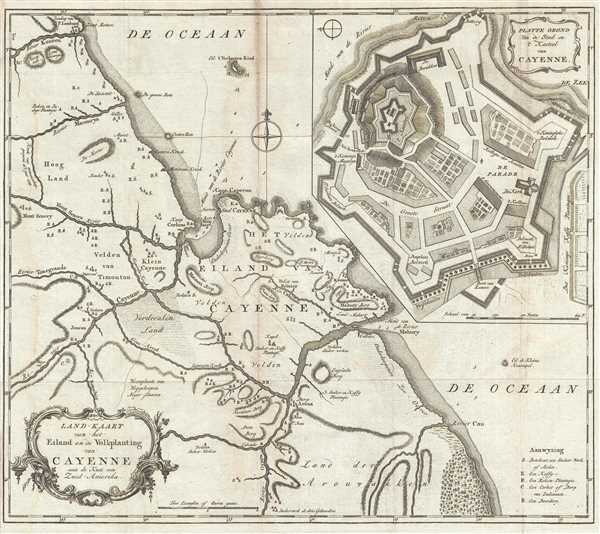1767 Isaak Tirion Map of Cayenne, French Guiana
Cayenne-tirion-1767
Title
1767 (undated) 14.25 x 16.25 in (36.195 x 41.275 cm) 1 : 160000
Description
The city of Cayenne is located on the coast near the mouth of the river known by the same name. Indicated by a sketch of the city's walls, Cayenne was then a thriving city in the French empire. Over the course of the preceding century, the city had changed hands several times between the French, English, and Portuguese before the French established permanent control of the colony in 1763. Then King Louis XV sent thousands of settlers to Guiana, but only a few hundred survived the first year. The tropical diseases and natives hostile to this invasion were the reality instead of the storied gold and easy fortunes.
This map was created by Isaak Tirion and published in 1767.
Cartographer
Isaak Tirion (1705 - 1765) was a Dutch publisher in Amsterdam. Born in Utrecht, Tirion quickly rose to prominence by publishing pamphlets, historical works, and most importantly, maps and atlases. He produced several atlases and Dutch town plans. His maps are mainly based on those of Guillaume de l'Isle. Tirion eventually relocated his printing house to the prestigious Kalverstraat. In his long career, he produced eight atlases in multiple editions, some of which were published posthumously until about 1784. More by this mapmaker...

